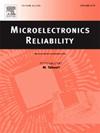Mechanical and electrical testing of encapsulated stretchable substrate interconnect models for emerging flexible electronic systems
IF 1.9
4区 工程技术
Q3 ENGINEERING, ELECTRICAL & ELECTRONIC
引用次数: 0
Abstract
Flexible electronics (FE) technology incorporates stretchable interconnects to enable devices those conform to irregular surfaces, bend and stretch without sacrificing functionality. These interconnects are crafted of specialized materials and designs those can withstand mechanical deformations with facilitating seamless integration of electronic components. Serpentine structures are widely used in flexible and stretchable interconnect. However, understanding their mechanical properties under different design parameters is crucial for optimal performance and reliability. In this work, through finite element analysis (FEA), the mechanical behaviour of serpentine interconnect structures with varying geometric parameters, along with and without encapsulation layer is novely investigated. The silver (Ag) material is used as conductor, while both substrate and encapsulation layers are formed using polydimethylsiloxane (PDMS). Also, the effect of mesh analysis is performed on the stretching of the considered interconnect models. Further, the Coffin-Mansons law based fatigue cycle test and the conductivity of the interconnect are analyzed. Finally, the simulation results are validated with experimental results. This research provides essential insightful observations on the interplay between design parameters, mechanical and electrical behaviour for the development of robust stretchable interconnect geometry in flexible electronic systems.
新兴柔性电子系统封装可拉伸衬底互连模型的机械和电气测试
柔性电子(FE)技术采用可拉伸互连,使设备符合不规则表面,弯曲和拉伸而不牺牲功能。这些互连由专门的材料和设计制成,可以承受机械变形,促进电子元件的无缝集成。蛇形结构广泛应用于柔性和可拉伸互连。然而,了解不同设计参数下的机械性能对于优化性能和可靠性至关重要。在这项工作中,通过有限元分析(FEA),新颖地研究了具有不同几何参数的蛇形互连结构的力学行为,以及是否有封装层。银(Ag)材料用作导体,而衬底和封装层均使用聚二甲基硅氧烷(PDMS)形成。此外,网格分析对所考虑的互连模型的拉伸进行了影响。并对基于Coffin-Mansons定律的疲劳循环试验和互连体电导率进行了分析。最后,将仿真结果与实验结果进行了验证。这项研究为柔性电子系统中坚固的可拉伸互连几何结构的发展提供了设计参数,机械和电气行为之间相互作用的重要见解。
本文章由计算机程序翻译,如有差异,请以英文原文为准。
求助全文
约1分钟内获得全文
求助全文
来源期刊

Microelectronics Reliability
工程技术-工程:电子与电气
CiteScore
3.30
自引率
12.50%
发文量
342
审稿时长
68 days
期刊介绍:
Microelectronics Reliability, is dedicated to disseminating the latest research results and related information on the reliability of microelectronic devices, circuits and systems, from materials, process and manufacturing, to design, testing and operation. The coverage of the journal includes the following topics: measurement, understanding and analysis; evaluation and prediction; modelling and simulation; methodologies and mitigation. Papers which combine reliability with other important areas of microelectronics engineering, such as design, fabrication, integration, testing, and field operation will also be welcome, and practical papers reporting case studies in the field and specific application domains are particularly encouraged.
Most accepted papers will be published as Research Papers, describing significant advances and completed work. Papers reviewing important developing topics of general interest may be accepted for publication as Review Papers. Urgent communications of a more preliminary nature and short reports on completed practical work of current interest may be considered for publication as Research Notes. All contributions are subject to peer review by leading experts in the field.
 求助内容:
求助内容: 应助结果提醒方式:
应助结果提醒方式:


